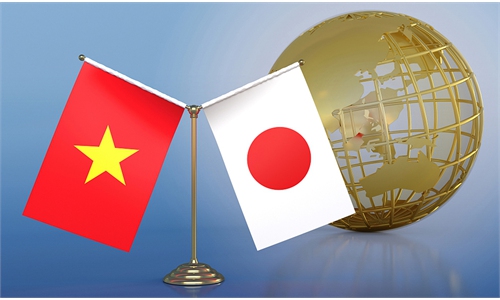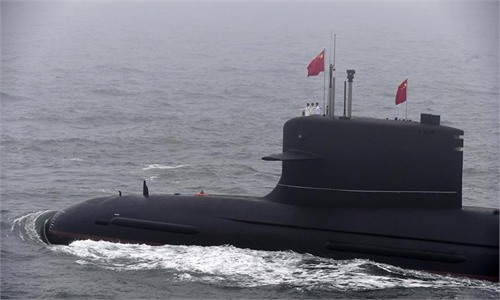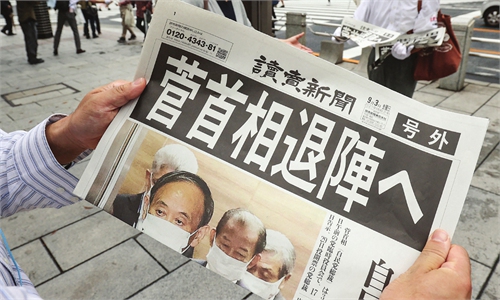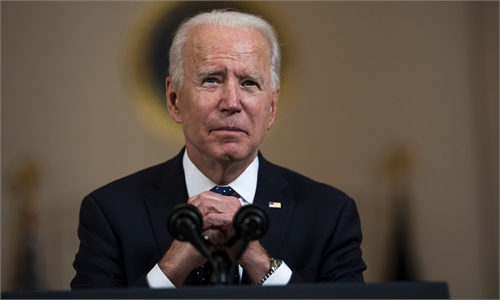Japan's massive drills intend to challenge China's sovereignty militarily
PLA can deal with US-Japan alliance in conflicts over Taiwan, Diaoyu Islands
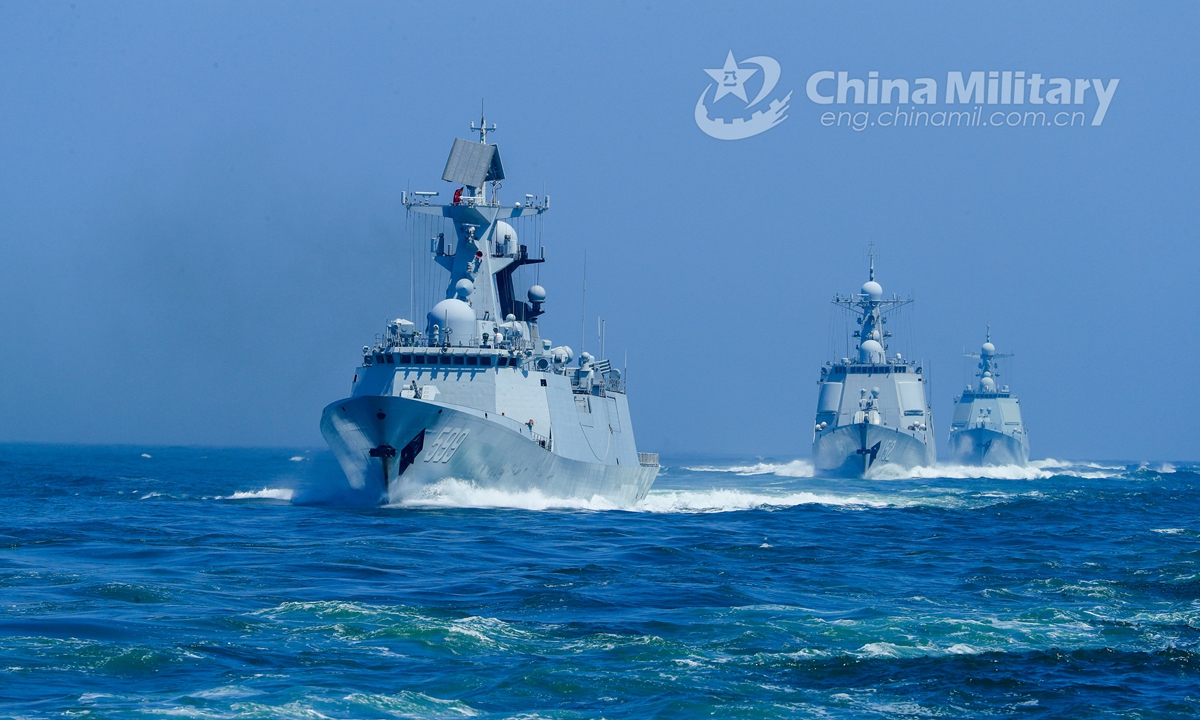
Warships attached to a destroyer flotilla with the navy under the PLA Eastern Theater Command steam in astern formation in waters of the East China Sea during the realistic training on April 23, 2021.Photo:China Military
The Japan Ground Self-Defense Force (JGSDF) on Wednesday started nationwide exercises involving all units for the first time in nearly 30 years in an attempt to boost deterrence and strengthen its capabilities. Japanese media said such a massive move is to deal with "China's ramped-up regional assertiveness." But Chinese experts noted that Japan is trying to display its hard power to serve the US Indo-Pacific strategy to contain China militarily.
But Chinese military experts warned that Japan does not have the ability to deter China in a military conflict over China's territories like the Diaoyu Islands and the island of Taiwan, and a military conflict with China will bring destructive consequences to the country.
Right-wing political forces in Japan have been lying to the Japanese public about the essence of the Diaoyu Islands issue and Taiwan question. Now the Japanese public holds unreasonable hostility and bias against China, and this is why the massive drills targeting China could win support for Japanese politicians. But to what extent Japan would intervene militarily, the US has the final say, analysts said, adding that China is prepared for the worst-case scenario - the US and its allies, including Japan, launch an all-out military intervention to interrupt China's national reunification.
The JGSDF Exercise '21, scheduled from Wednesday to the second half of November, was organized to strengthen the JGSDF's deterrence and response capabilities by ensuring JGSDF's readiness towards threats to Japan, the JGSDF said in press releases last week.
As the largest exercise since 1993 that all units of JGSDF participate in, the exercise focuses on preparation as a basis for various operational movements and consists of five training courses, namely, deployment preparation, deployment training, mobilization training, logistics and medical training and system communication training, the releases said.
The JGSDF last conducted exercises of this scale in 1993 after the Cold War ended. Around 100,000 personnel, 20,000 vehicles and 120 aircraft will join the drills, which will also involve Japan's Maritime and Air Self-Defense Forces as well as a US Army landing ship.
A total of 12,000 personnel and 3,900 vehicles from two GSDF divisions based in Hokkaido and in the Tohoku region of northeastern Japan, as well as a brigade in western Japan's Shikoku region, will start an expeditionary mission to the Kyushu region in southwestern Japan next week.
The troops will carry defense equipment during the mission, including tanks, to several training grounds in Kyushu by land and sea. Private trucks, ferries and railways will also be used in the exercise.
The training subjects indicate that one of the main objectives of the drill is to mobilize a large number of troops and equipment from across Japan to the country's southwestern region, where is closest to the Diaoyu Islands and China's island of Taiwan, observers said.
While the combat aspects of the exercise have yet to be revealed, the mobilization aspects seem to be the key focus, as Japan is practicing transporting its main forces including heavy equipment like tanks by land and through maritime transportation methods, both military and civilian. That also includes US support, a Chinese military expert who asked for anonymity told the Global Times on Wednesday.
Amphibious landing and island seizure must be part of the exercise, the expert predicted.
Liu Jiangyong, vice dean of the Institute of Modern International Relations at Tsinghua University, told the Global Times on Wednesday that such massive drills were arranged during the term of former prime minister Shinzo Abe, adding that the drills with the Quad countries and other Western countries recently serve the goal of "showcasing Japan's hard power and loyalty to the US Indo-Pacific strategy."
While the JGSDF is the main force in the exercise, the Japan Maritime Self-Defense Force, Japan Air Self-Defense Force, the US Army in Japan and civilian transport units will also join the drill, according to the releases.
To respond to attacks on the islands, transportation capacity that enables quick and large-scale deployment is the key, Japan's Defense Minister Nobuo Kishi was quoted by the Yomiuri Shimbun as saying at a press conference on the exercise on Friday.
The exercise would last about two months, which means Japan is looking to finish large-scale nationwide troops mobilization to the location where it deems a military conflict could break out with China within that time frame, the anonymous expert said.
China can closely monitor the development and progress of the Japanese exercise and get to know how the Japan Self-Defense Force conducts this mobilization, the expert said, noting that if this happens again, this could be a sign that Japan is preparing for war and the PLA should stay vigilant.
Taiwan and Diaoyu Islands
Many media reports from Japan, the US and the island of Taiwan said that the Japanese drill is aimed at China over the Diaoyu Islands and the island of Taiwan.
"Kishi has deep connections with the Taiwan separatist authorities, and he called for a security dialogue between Japan, the US and the DPP separatist authorities, and he is also Abe's brother. So it's not surprising that this kind of Japanese politician will try to use the Taiwan question to add tensions to China-Japan ties," Liu noted.
Japan's exercise will hone its troops' combat capabilities at a time when Japan is facing an election, and when Japanese right-wing forces and the US are instigating a continued, strong stance on China over the Diaoyu Islands and the island of Taiwan regardless of the election result, Song Zhongping, a Chinese military expert and TV commentator, told the Global Times on Wednesday.
Japan is also hyping the so-called China threat theory so it can have an excuse to break the limit of its pacifist constitution, Song said.
While the scale of the exercise seems to be large, Japan's military strength is far below that of the Chinese People's Liberation Army (PLA) in almost all aspects, the anonymous military expert said.
If a military conflict breaks out over the Diaoyu Islands, or if Japan interferes in the Taiwan question militarily, the Japan Self-Defense Forces will have no chance to win, either on the ground, in the air or at sea, the anonymous expert said, noting that military bases from which Japan sends troops would also be destroyed.
However, in such scenarios, Japan will unlikely confront China alone, as the US will very likely interfere as well, since the US-Japan alliance should be viewed as a whole, Song said.
From this perspective, the Japanese exercise could also be a part of a bigger picture involving the US military, observers said, noting that the US troops stationed in Japan is also part of the drill.
Japan held joint military exercises with countries like the US, Australia, the UK and India in the past month, and hosted maritime replenishment for a US Coast Guard ship in the East China Sea in late August.
China is paying close attention to the situation, and the PLA is holding intensive exercises to boost combat capabilities in realistic scenarios with the most complex situations, Song said.
Even if the PLA has to face the most powerful enemies, it is capable of and confident in safeguarding China's national sovereignty, territorial integrity and development interests, experts said.
Liu said letting Japan conduct exercises also shows that the US, after its failed mission in Afghanistan, wants its allies to do more when it's suffering from the mess, and the Afghan issue proves that the military intervention launched by the US, NATO and other US allies can't even win a war against the Afghan Taliban. So when they try to contain major powers like China and Russia, they knew how tough the mission would be.


